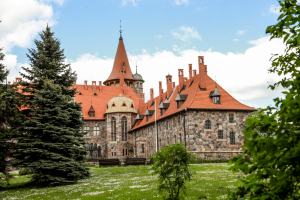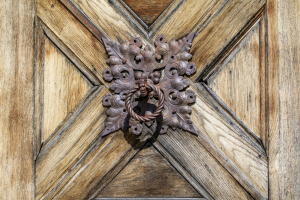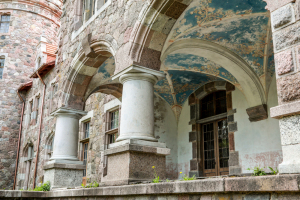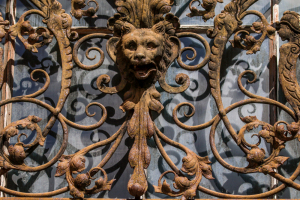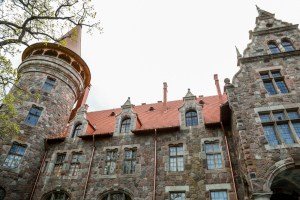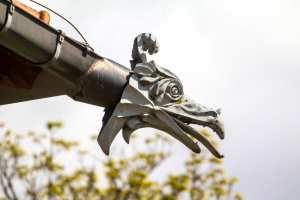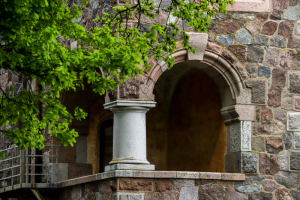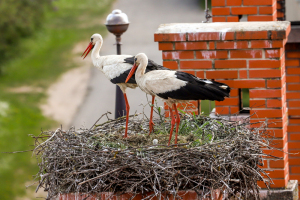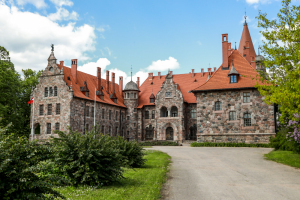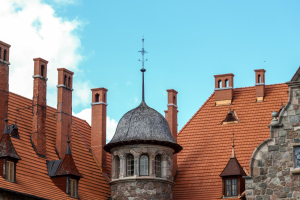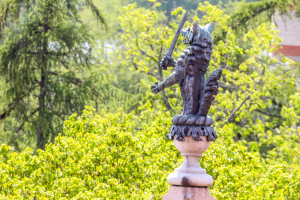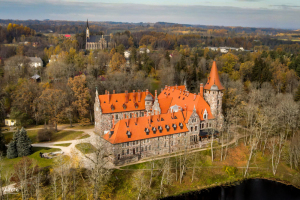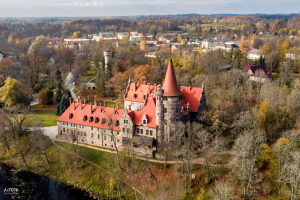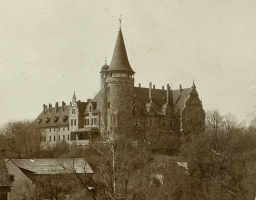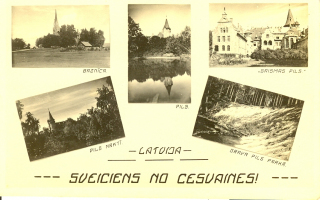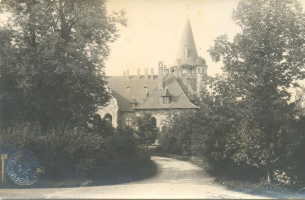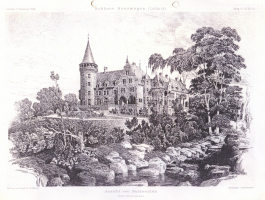Cesvaine Castle - guided tours, exhibitions, museum, rental of premises
Cesvaine Castle is a European-scale example of historicism combining architecture, sculpture, metalwork, and painting. It took only three years (from 1893 to 1896) for the owner Adolf Gerhard Boris Emil von Wulf to construct the new manor house designed by the renowned architects from Berlin, H. Grisebach and A. Dinklage.
To make the impression of an aged architecture, Cesvaine Castle is built out of fieldstone using elements of Romanesque, Gothic, Renaissance, and Art Nouveau architecture. The location of the new castle matches the place where the previous manor house and the medieval castle used to be.
OFFER:
* Visiting the castle.
* Viewing tower (21 m high).
* Exhibitions.
* Rental of castle premises, tel. +371 28337703, 22331112 (Head Linda Vizuma, linda.vizuma@madona.lv).
* Visiting the castle museum collection, tel. +371 28337703, 26826082 (Historian Rita Medne, rita.medne@madona.lv).
* Educational programmes, tel.+371 28337703.
* Guided tours in the castle, tel. +371 28337703, 64852225 (pils@cesvaine.lv).
TICKETS:
* Regular: EUR 6;
* Pupils, students, seniors: EUR 3;
* Family EUR 10:
- 1 adult and 1 to 3 children,
- 2 adults and 1 to 2 children.
* Family EUR 8.50:
- 1 adult and 1 to 4 children,
- 2 adults and 1 to 3 children,
- large family (by presenting the Honorary Family card 3+ or other document certifying the status of a large family),
* Groups of pupils, students, seniors (10 or more people): EUR 2.50 per person;
* Groups (10 or more people): EUR 5 per person.
Entrance FREE OF CHARGE:
* Children up to 7 years old,
* People with disabilities up to 18 years old,
* People with disability of Group I or Group II (by presenting a certificate) and one person accompanying the person with disability,
* Orphans and children without parental care (by presenting a document certifying the status) and the people accompanying such children (1 person per 10 children),
* Students of boarding schools and children from social rehabilitation centres (by presenting a document certifying the status) and the people accompanying such children (1 person per 10 children),
* Group leader (1 person), if there are up to 25 people in the group,
* Group leaders (2 people), if there are 25 or more people in the group.
Entrance to the castle is free of charge for all visitors on the last Wednesday of every month.
TOUR GUIDE SERVICES (in addition to entrance fee):
Guided tour around the CASTLE (45 min)
LV:
* EUR 2,00 per person (a group up to 10 people);
* EUR 25,00 (a group up to 29 people);
* EUR 40,00 (a group from 30 people);
RU, EN, DE:
* EUR 2,50 per person (a group up to 10 people);
* EUR 30,00 (a group up to 29 people);
* EUR 60,00 (a group from 30 people).
Guided tour around the CASTLE AND MANOR complex (90 min)
LV:
* EUR 3,00 per person (a group up to 10 people);
* EUR 30,00 (a group up to 29 people);
* EUR 50,00 (a group from 30 people);
RU, EN, DE:
* EUR 3,50 per person (a group up to 10 people);
* EUR 35,00 (a group up to 29 people);
* EUR 70,00 (a group from 30 people).
HISTORY:
* History of Cesvaine Castle dates a long time back: the first castle in Cesvaine was built in the territory where the park is located now, this site is now called Cesvaine Castle Mound. Then, at the end of the 14th century, the Archbishop of Riga built a rock castle which was used by the landlord responsible for the whole Cesvaine region.
* Cesvaine was seriously damaged during the Polish–Swedish War (1600–1629), according to data there were only 32 men in 26 households in 1638. The castle was torn down in the mid-17th century during the Russo–Swedish war, and the town and the castle suffered again during the Great Northern War (1701–1710).
* Nowadays, the 50 m long foundation wall of the western wall of the rock castle-front is the only visible evidence of the medieval castle. In 2002 and 2003, minor archaeological works were carried out near the castle under the supervision of the archaeologist I. Ose.
* Construction of the new castle was launched in 1893, and just two years later the building was ready for occupancy, as evidenced by the G. V. Baranovsky’s “Architectural Encyclopaedia of the Second Half of the 19th Century” (issued in St Petersburg in 1904) introducing the architectural achievements of the second half of the 19th century.
* Managing construction works was difficult due to the big distance from the railway, untrained workers, and language barriers. It was especially hard to collect the granite rock, which was used for the exterior and brought from the vicinity. Although it had been intended to install a central heating system originally, this idea had to be discarded and stoves were built instead as firewood was the most accessible and convenient fuel in Cesvaine at that time.
* The massive portal is complemented by a ramp, and the door is decorated with beautiful Renaissance-style metal fittings. Raise your eyes at the decorative gutters on the façade corners! In the past, the left wing of the building was used by the lords which is why it stands out for the rich gable with a wolf-shaped figure atop it.
* It is little known what is going on in the castle after the death of Adolf von Wulf. But later, since 1919 the castle was turned into a school. Unfortunately a fire in 2002 destroyed the roof constructions. The great tower was restored in 2006, followed by the roofs of the left and the right wing (end of 2010). Restoration also took place inside – part of flooring, the great stairs and vaults above them, ceiling of the musicians’ hall, and the salon have been fully restored and the cellar has been opened and cleaned up, while the fire-place in the dining-hall, several doors and the fire-place in the musicians’ hall have been restored partially. In 2019, reconstruction of the roof above the central part of the castle was completed. The restoration is still going on.
* In 1904, the von Wulf family leaves for Germany, but the castle building was used by Cesvaine school from 1919 until the fire in 2002. Step by step, the castle is returning to its original looks, and maybe thanks to this fact it has also been chosen as the right setting for several international films. The castle with its tower and the manor are popular tourism objects.
Tue, Wed, Thu: 10am –6pm
Fri, Sat: 10am – 7pm
Sun: 10am – 6pm




